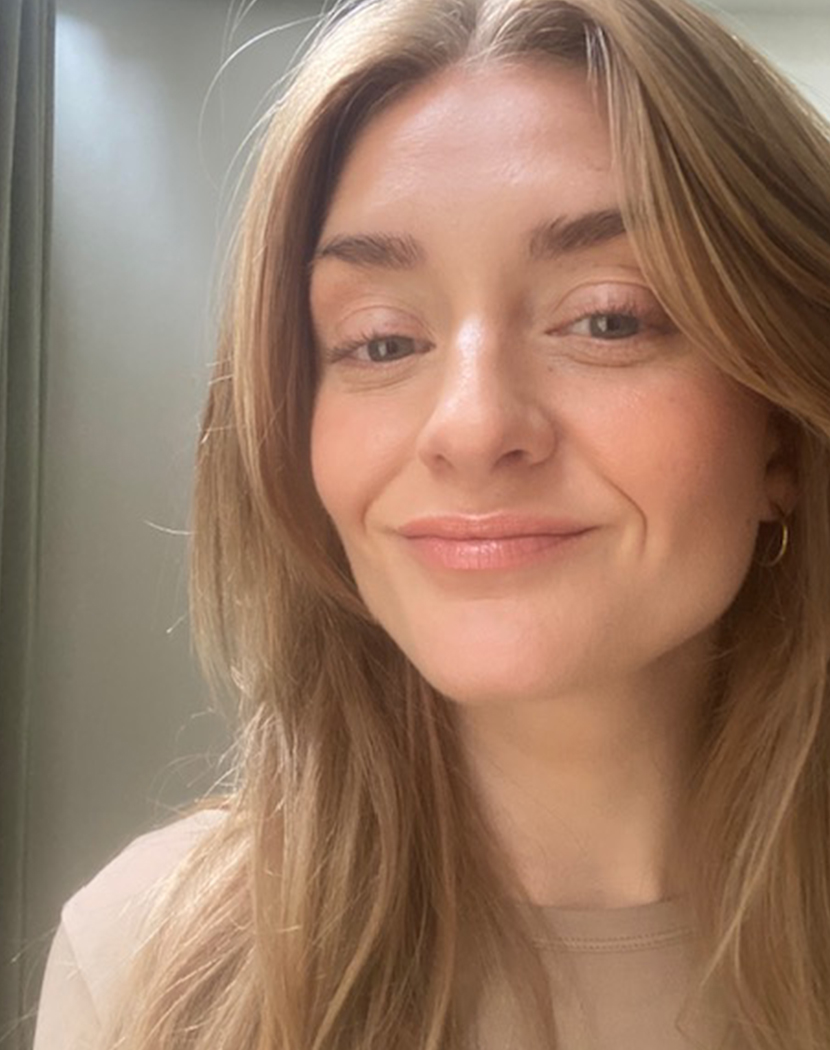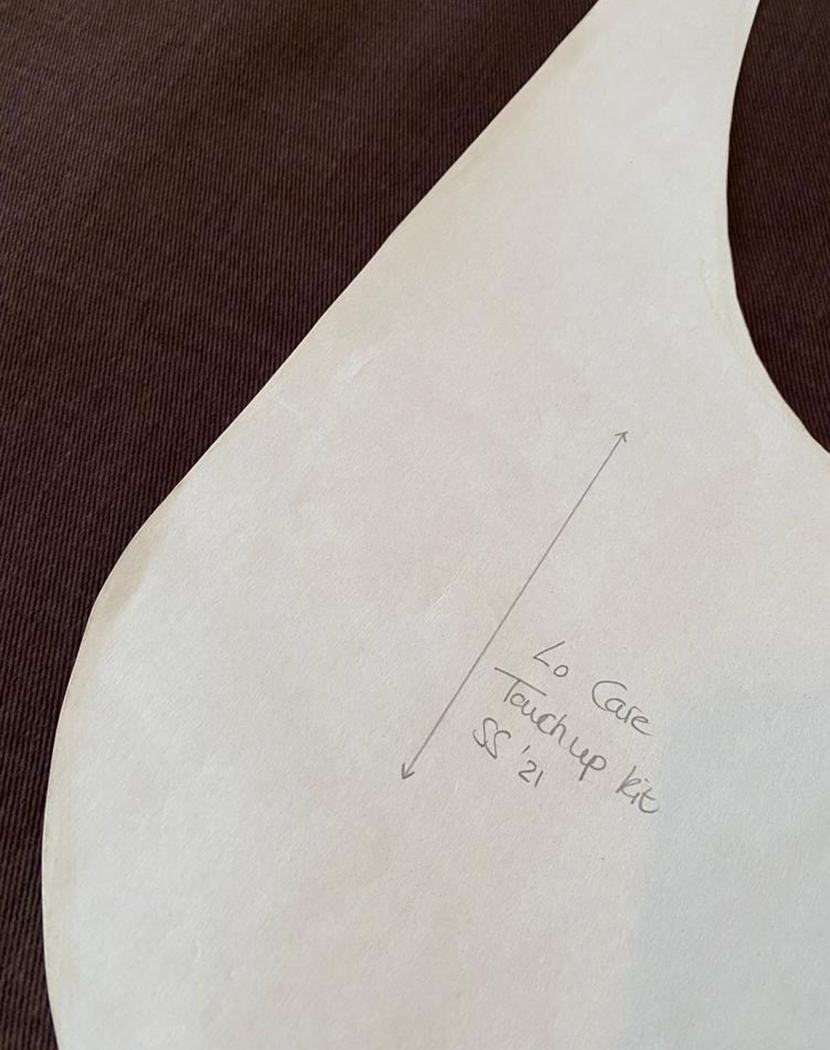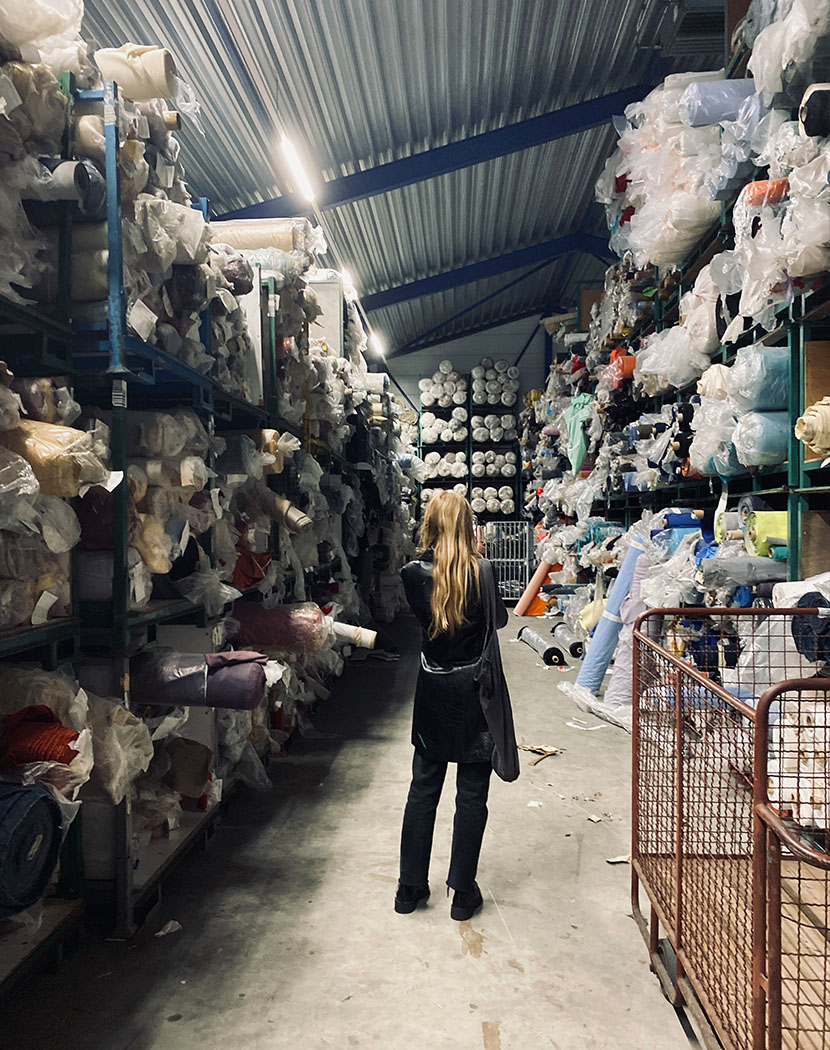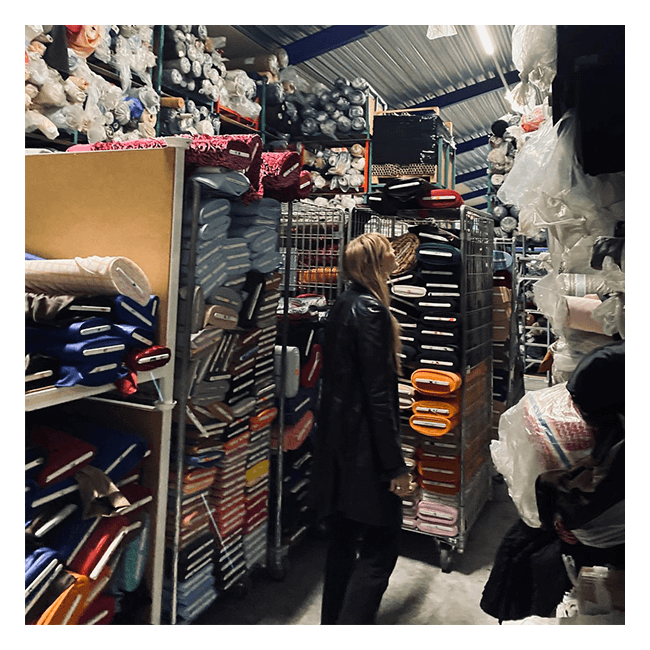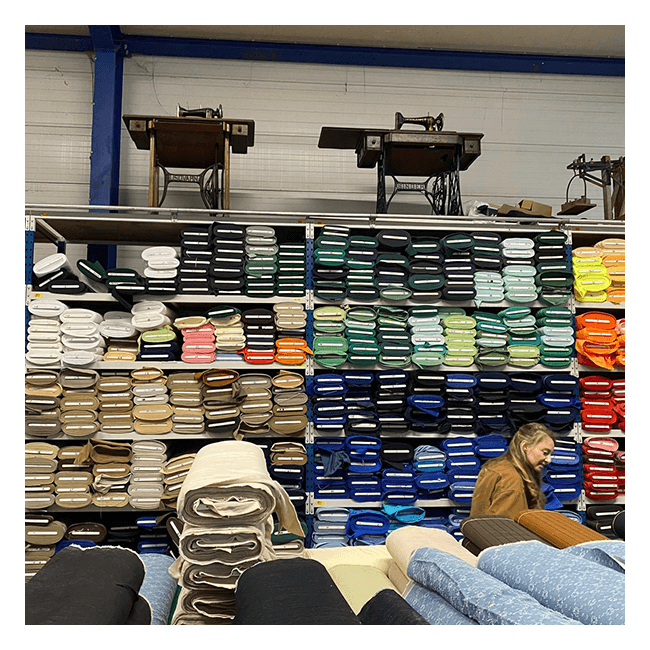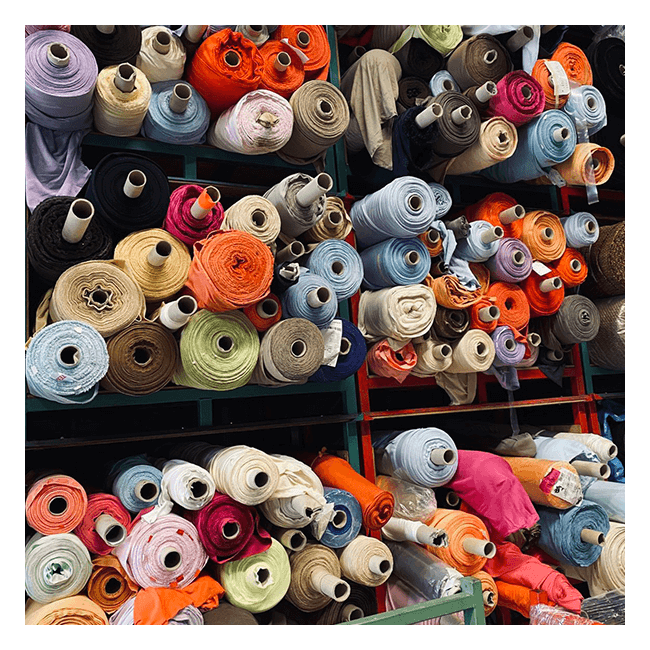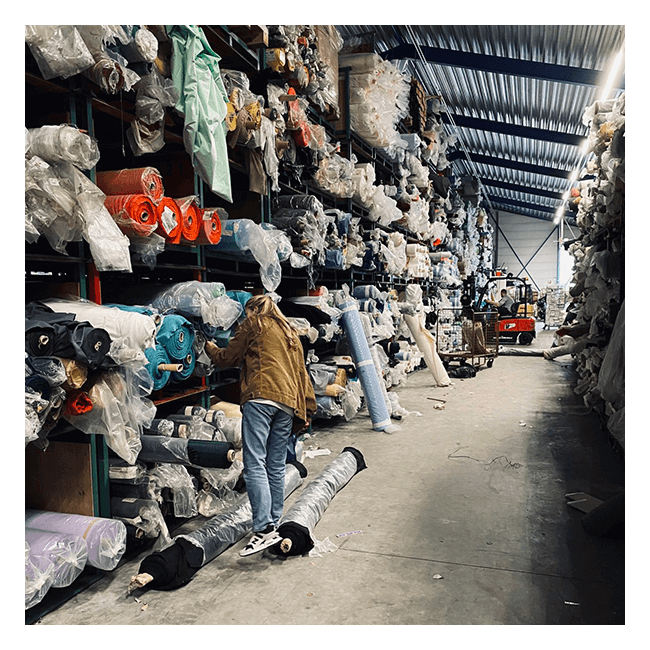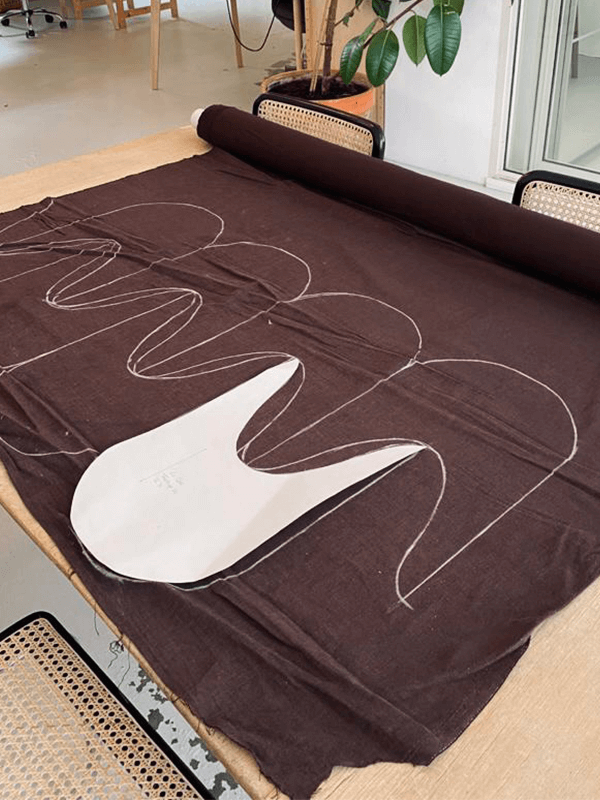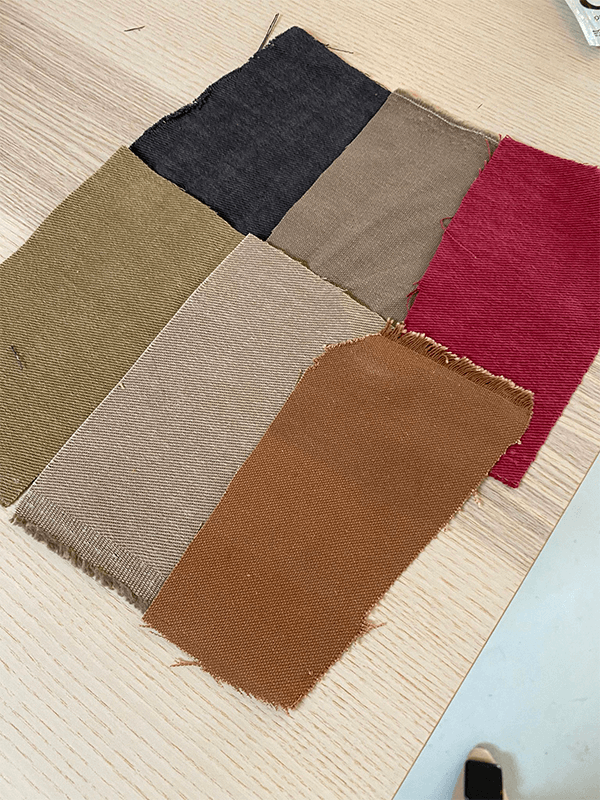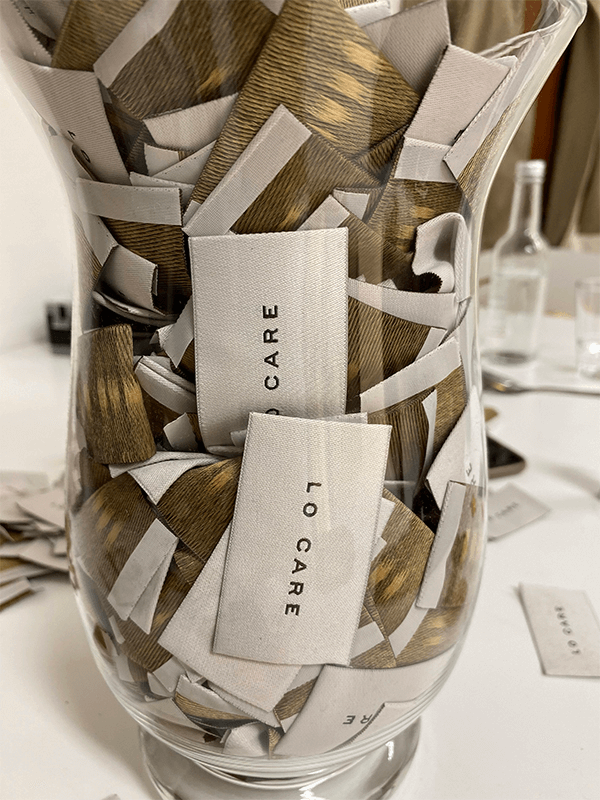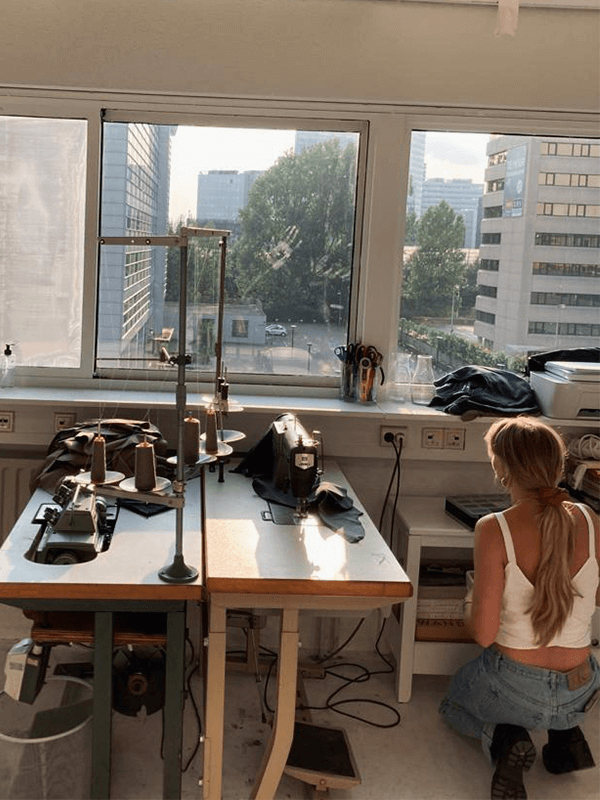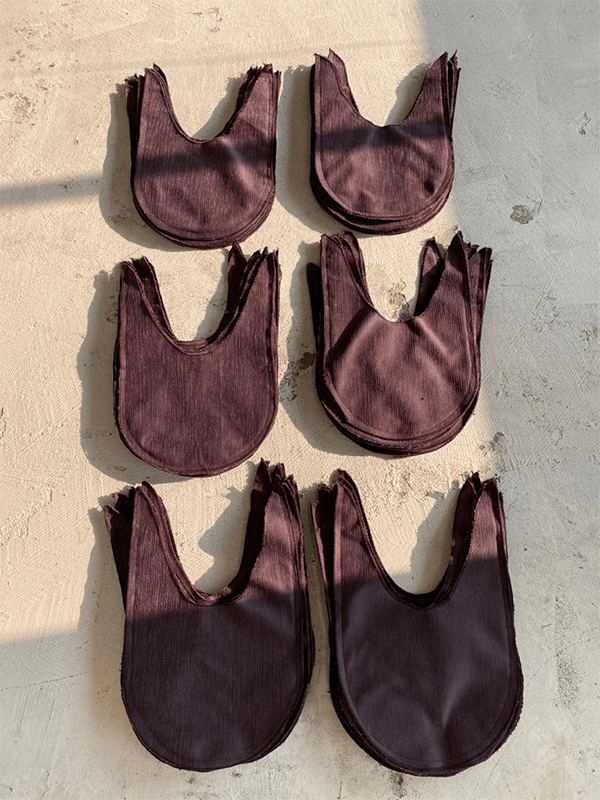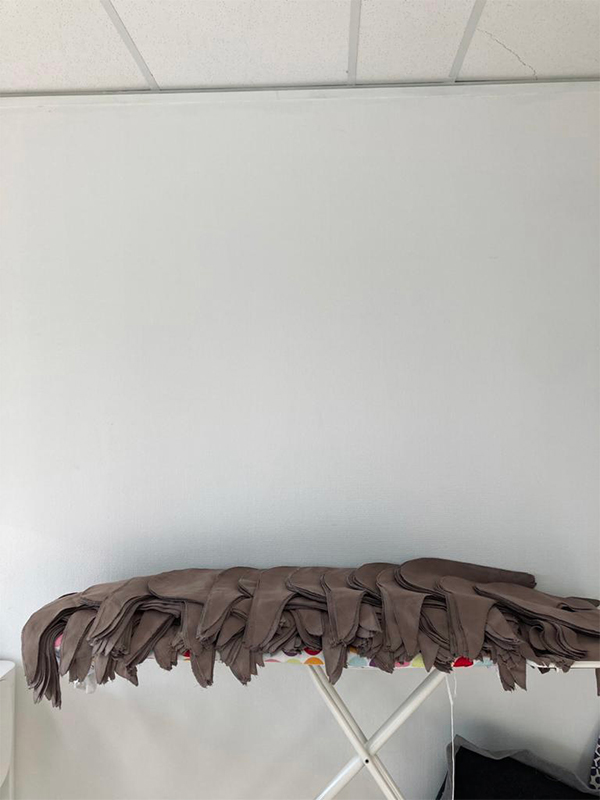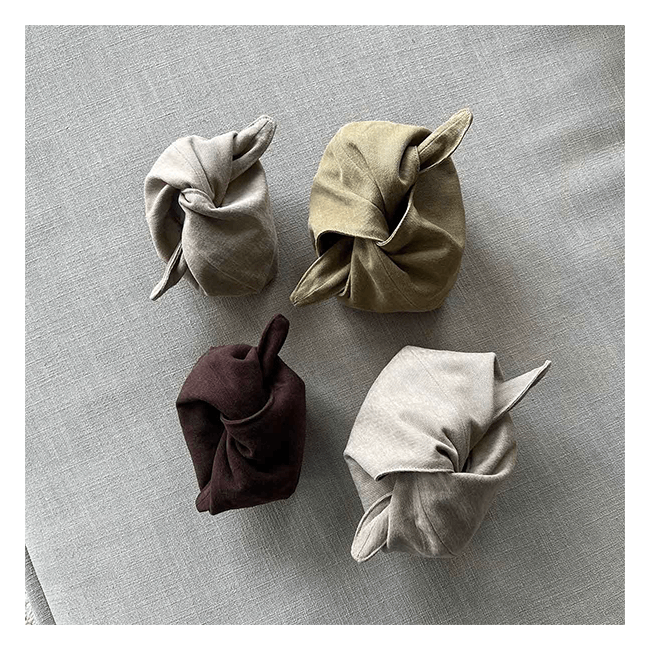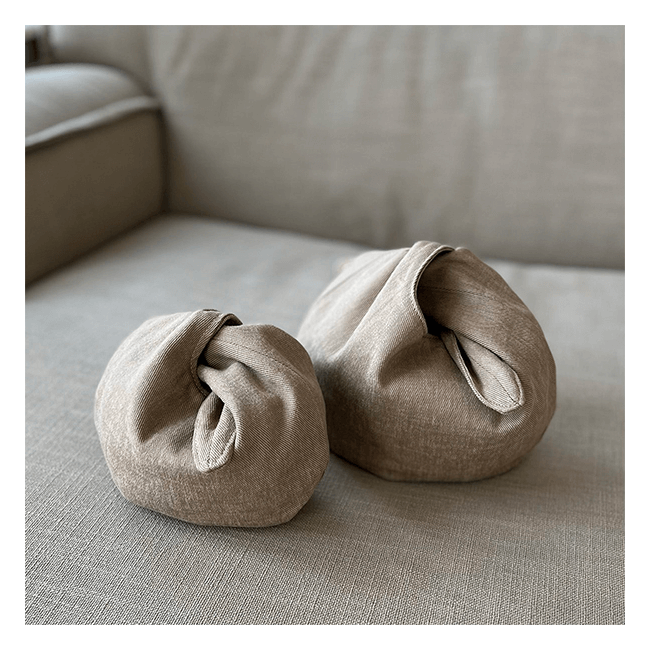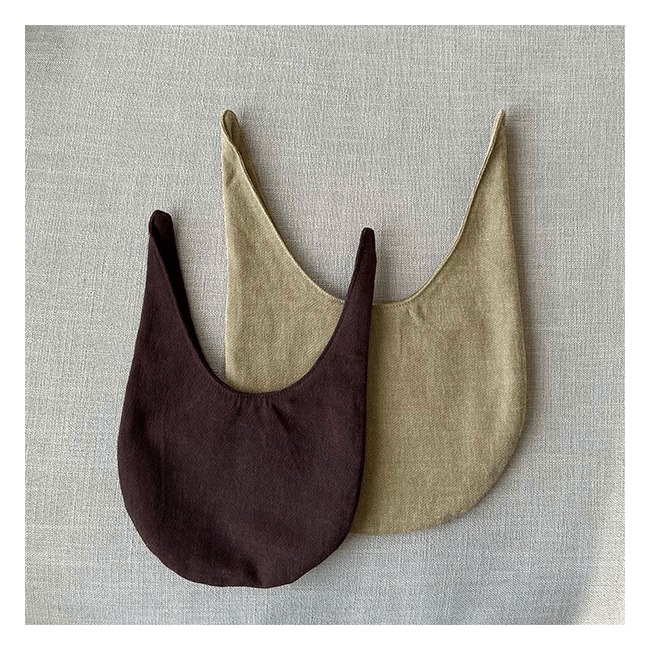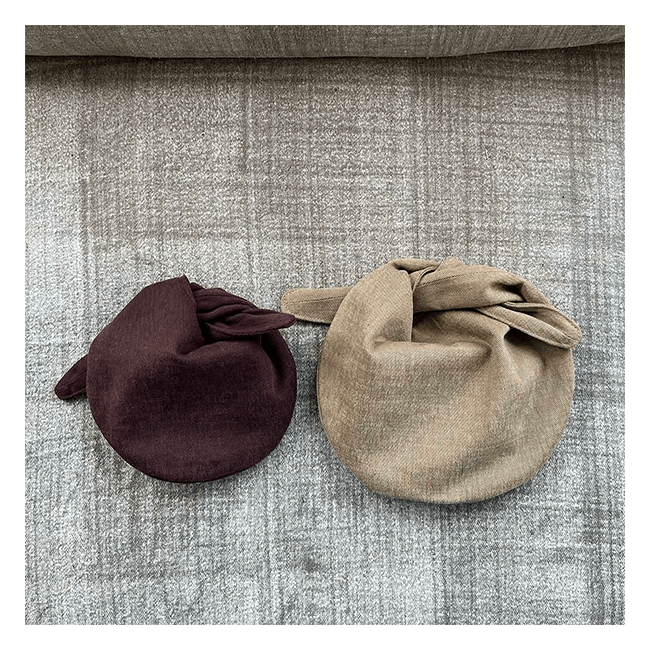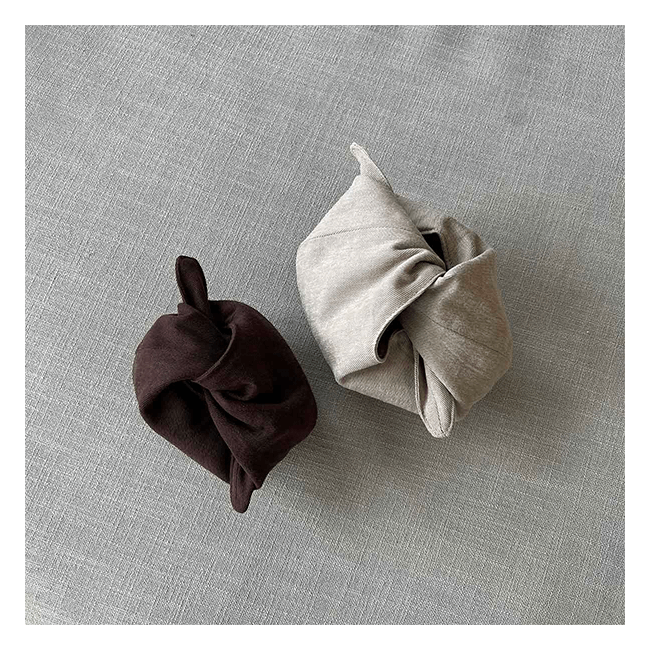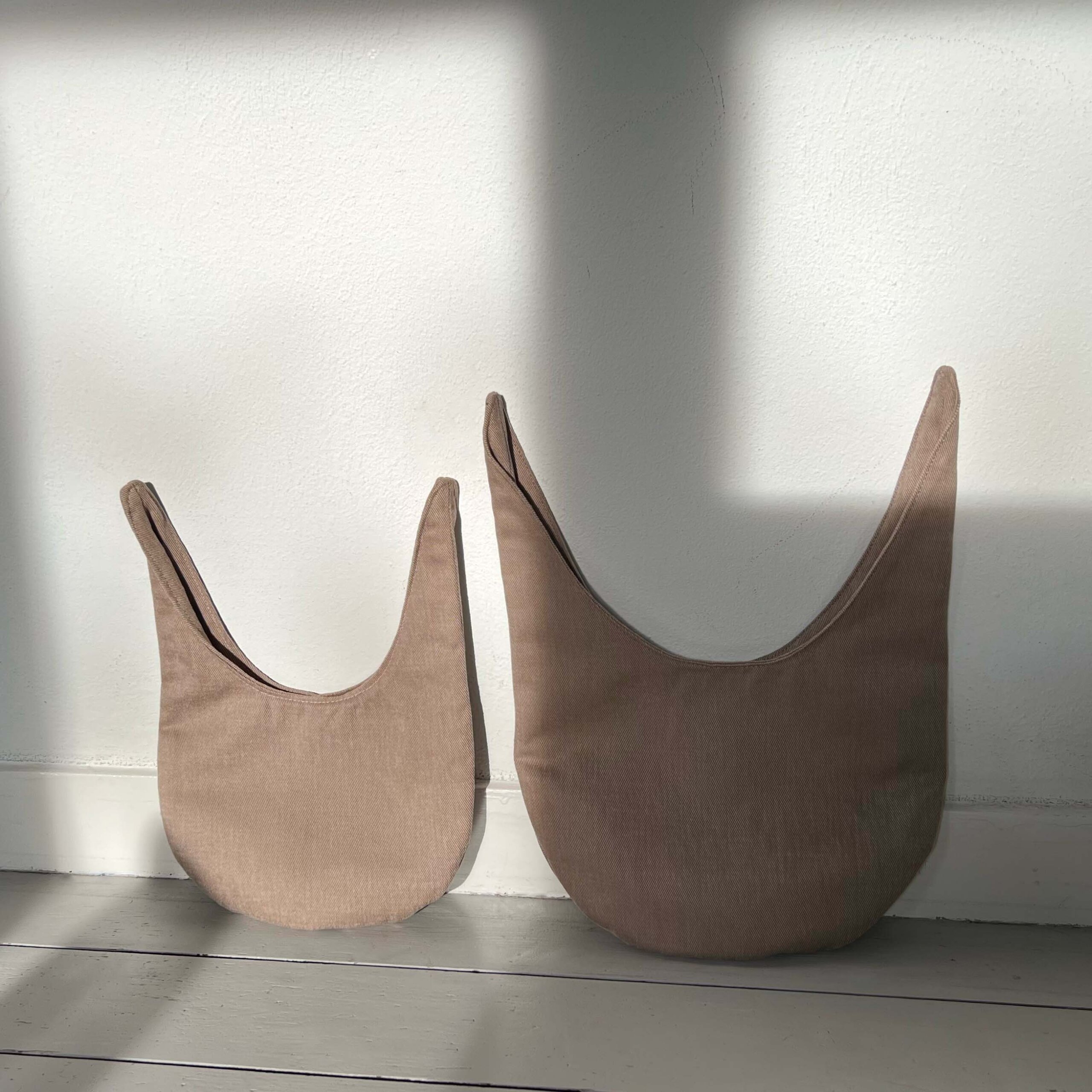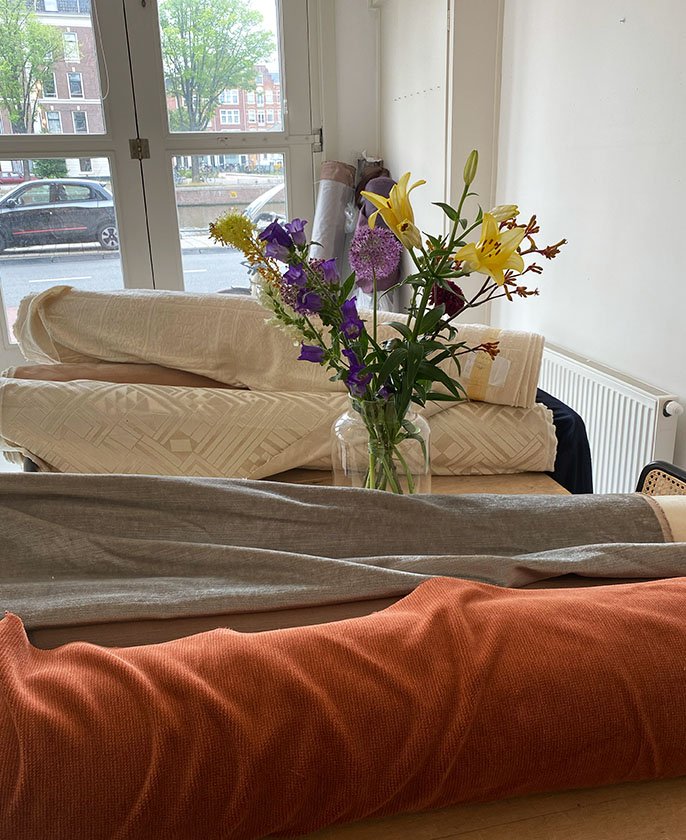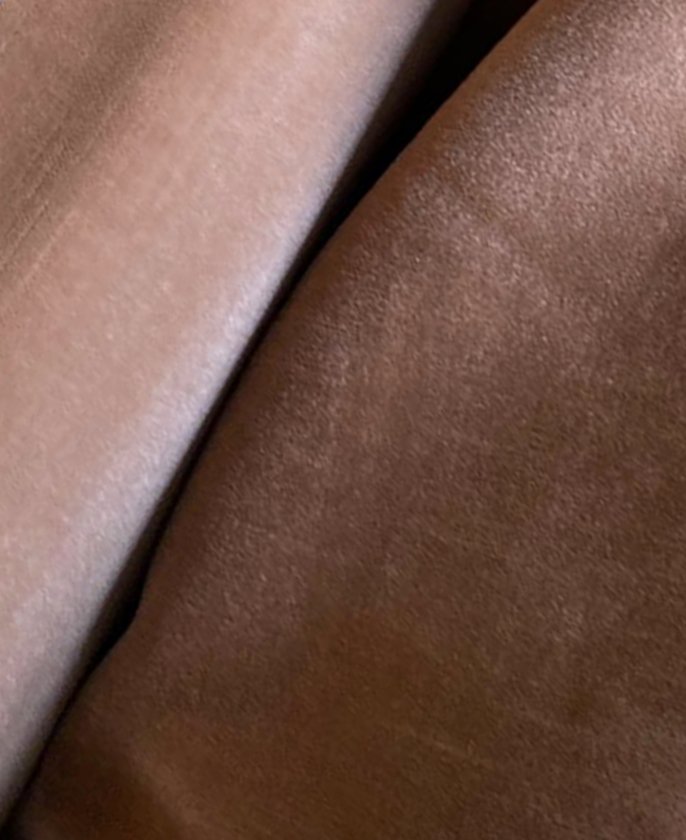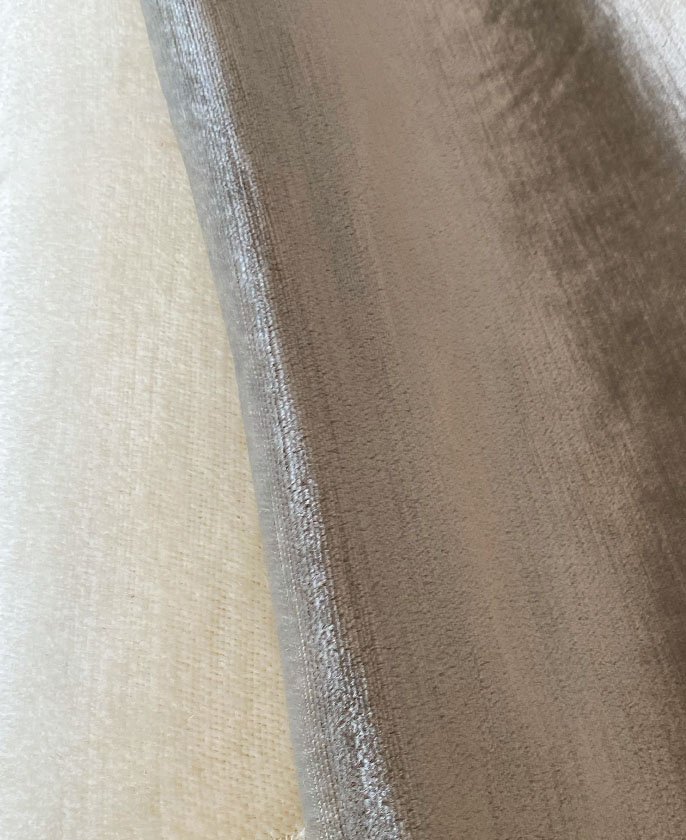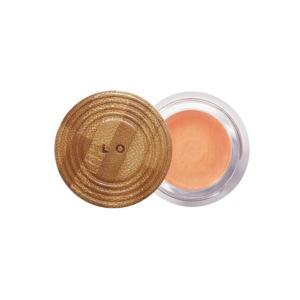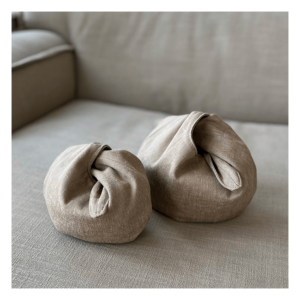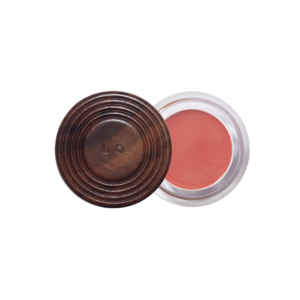
LO CIRCLE
Hillie Huijben
-
WHO
designer and maker of our bags
-
IG
@hilliehuijben
-
LO COLOUR
ARDASH
BOBBIE
“I LOVE THE CONCEPT OF REUSING, BUT MAKING IT BETTER.”
November 24, 2023 by Rosa Polak
We’re launching a bigger bag. Time to meet the woman that designed and hand makes all our bags: Hillie Huijben.
Hillie studied fashion design and denim development at the Jean School in Amsterdam and after working for Mick Keus, she founded her own design studio. She collaborates with brands, assisting them with design, technical drawings, pattern making and product development.
Hillie and I talk about how our bags came to be, fashion, personal style and expressing yourself. And, we tease a future project. Get to know Hillie below.
Project ‘Touch-Up Kit’
R: In 2021, we were contemplating ways to elevate the concept of “the touch-up”. Natural makeup usually requires a few touch-ups during the day, we wanted to turn this into a moment of self-care and celebration rather than a chore.
On our vision board: a lip brush, pocket mirror and a simple pouch. Not a full blown make-up bag, more like a wallet for your essentials, something you could easily transfer from bag to bag.
I came to you with the idea of the ‘Touch-Up Kit’ and asked you to design a bag together. Could you tell us about the design process?
H: It was such a fun project for me because LO shares the values I like to work with. We started by setting clear requirements for the bag. You wanted something simple but chic, a clean minimalist aesthetic, and still easy to use. Also, to really strip down to the basics, no additions, no hardware, very LO.
Then, I started my research and image sourcing. The ‘no hardware part’ was pretty challenging. We came across drawstring and folding bags, but ultimately, we were most inspired by the Japanese Bento Furoshiki knot, a very simple but efficient way to close fabric. We also really wanted to incorporate the roundness of LO; that’s how the round design came to be.
After several rounds of sampling, we finalized the design and size, and then moved on to fabrics. We did a few tests with different fabrics and thickness.
We knew we wanted to work with deadstock fabrics, and by coincidence found out the partner of your friend had a deadstock fabric business. We were invited to the warehouse and could browse everything. That was amazing. I remember you asking the supplier where the natural fabrics section was, and he just laughed and explained that there are no sections; everything is scattered throughout the place. We had to search through all those rolls of fabrics and had to completely let go of our initial ideas about what we wanted. But I think that’s also part of the fun of working with a supplier like that. We found some great fabrics with amazing textures.
•••
DEADSTOCK WAREHOUSE
The supplier acquires complete truckloads of deadstock fabrics sourced from various global locations that would otherwise be destroyed. The buying process relies on good fortune, since they buy these shipments without prior knowledge of their contents. Shipments may include materials of varying quality, ranging from rubbish to extremely high-quality fabrics. It’s always a gamble. Their primary customer base consists of corporations specializing in workwear, and their inventory turnover occurs on a daily basis.
•••
R: There are a lot of steps involved in the making of one bag, could you explain.
H: The bag is double lined, which means it consists of four pieces of fabric — two outer parts and two inner parts. We use separate patterns for the outer and inner part, draw them on the fabric with chalk, and cut them out. Each piece is checked for any issues to make sure it meets our standards. The edges of each cut out are locked, which ensures the bags are machine washable. Next, all the cut pieces are steamed. Then we start sewing, first joining the individual pieces and then combining the two layers. We add the label before the final touches. After that, we steam the bag again. Overall, there are nine steps, and it takes about two to three hours to make one bag.
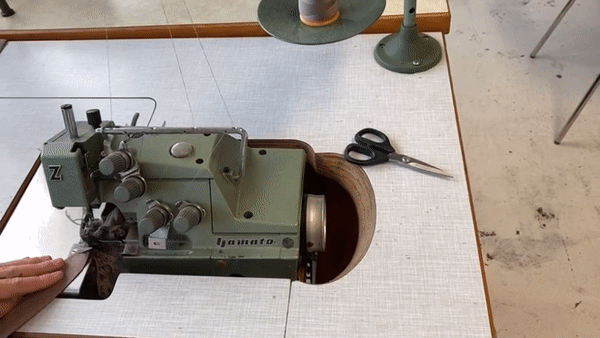
R. And now thus a bigger bag…
H: Yeah, we both love and use our current bags so much, but for some occasions it wasn’t spacious enough. With the NelsonJohnson collaboration we already created a bigger bag, because that worked really well with the sturdier nature of the denim. This size really allows you to pack twice as much. It’s great for when you want to bring more bulky products, or when you’re going away for the weekend or on holiday.
R: When did your love for fashion start? And where have you learned to sow?
H: I was introduced to fashion at home by my mom and my grandmother. My mom was always busy creating, especially skilled with her sewing machine. She made her own clothes and even had her own clothing brand, a passion she had nurtured since her childhood. I was naturally curious about what it all entailed. I adopted the same passion for clothes and creating, and my mother was awesome enough to give me endless space and freedom to experiment with this. In the same way, my grandmother taught me how to sew. I have wonderful memories of us making things, not just clothes but also crafts. We would go into the woods to look for leaves, nuts, always trying to make something whimsical and fun.
R: What is your fashion philosophy?
H: Going to fashion school was really transformative. I learned so much about material, the processes behind productions, the waste, the balance between profit and creation; it made me change the way I look at fashion, how I buy my clothes, but also how I want to work and contribute.
That’s why I loved working for Mick (Keus). I’m so inspired by how he built a thriving business, in a very polluting category – we all know denim is one of the most environmentally damaging items we buy; he, however, made it sustainable and still fashionable. I love that concept of reusing, but making it better. Adapting to modern times.
I also try to implement that in my personal style. There’s something exciting about thrifting, finding unique pieces you can make your own. Having your own personal style doesn’t mean you need to be very eccentric. Expressing yourself through what you wear shows your individuality. It gives you the freedom to experiment. It can also be a great way to connect to people. When you love what you’re wearing and how it makes you feel, you’re more confident. In other words, when you look good, you feel good.
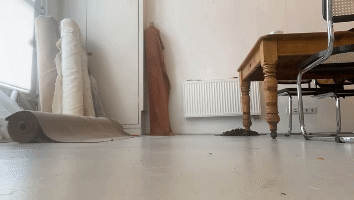
R: I love that. This goes for clothes, but also for make-up I think. Do you have any routines or wellness habits you swear by?
I’m a sucker for a good highlighter. You recently gave me BOBBIE & ARDASH, and I’m obsessed. Great colours. Worn BOBBIE daily ever since.
How do you define beauty?
Beauty can be found everywhere; sometimes directly visible, other times it requires a closer look. For me, beauty is more about connecting with things that make me happy than about material possessions. The small things. Creating clothes, messing around the house, doing nothing. In the evening I love to walk around the canals with all the lights. Thinking about lights, I’m really excited about this years Light Festival.
A note to your younger self
Slow down
Reading right now
De helaasheid der dingen van Dimitri Verhulst
Name three products you can not live without
My ring that once belonged to my sister, I wear it every day
LO’s BOBBIE, my new favourite
Klairs Vitamin C Drops
Lastly, at the deadstock wearhouse we found some real interesting fabrics, maybe fun to share that here.
Yes. The supplier remembered a very rare delivery that came in that day: really high quality furniture fabrics made from 100% wool. It was the richest velvet we ever felt. We had to bring them. We both knew they would be perfect for cushions. We already designed them without hardware, no zipper. The samples we made turned out beautiful, time to start production.
